Configuring read-only access to the Service API with ASP.NET Identity
Configuring read-only Service API access
First of all, ASP.Identity should be configured for Service API. The process for EPiServer 10 is same as for EPiServer 9.
Creating read-only user group and user
Creating user group and a user are simple. With AspNetIdentity package default administrative user interface works. Navigate to the Admin -> Administer Groups and add a new group.
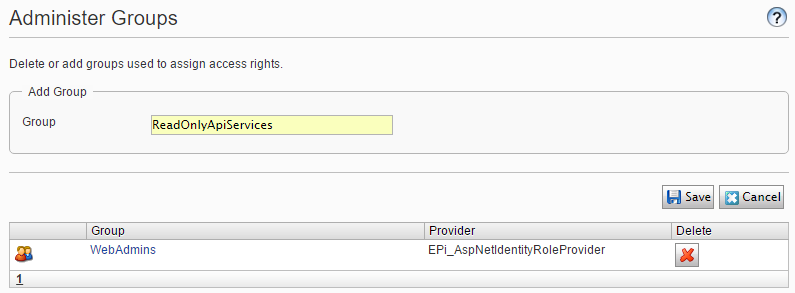
Next step is creating the user. Open Admin -> Create User and fill in Service API user's information. Add the user to the newly created read-only group.
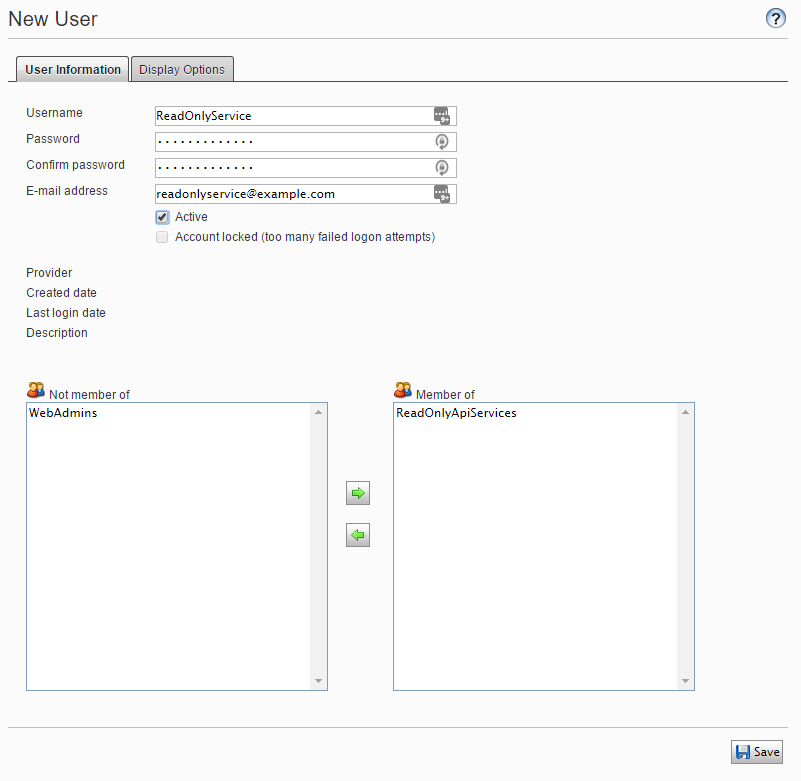
Adding read-only access to Service API
Access to the Service API can be configured under Config -> Permissions for Functions. Here edit ReadAccess under EPiServerServiceApi.
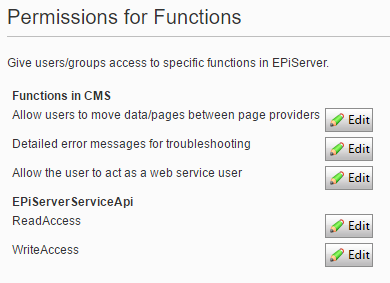
By default, only Administrators are listed here. Add read-only user group here too.
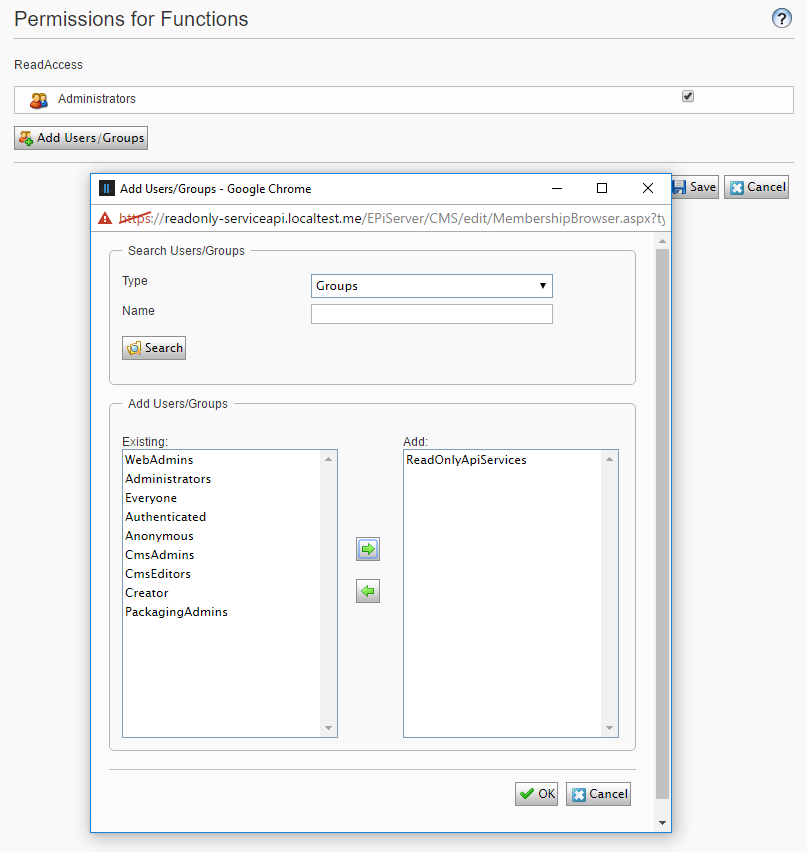
Testing
To test the setup, it is possible to create automated test which authenticates against site's Service API. For this purpose, I have created a base class to use for all Service API tests.
public abstract class ApiTestsBase : IDisposable
{
private const string Username = "RadOnlyService";
private const string Password = "Episerver123%";
protected readonly HttpClient Client;
private const string IntegrationUrl =
"https://readonly-serviceapi.localtest.me";
protected ApiTestsBase()
{
ServicePointManager.ServerCertificateValidationCallback +=
(sender, cert, chain, sslPolicyErrors) => true;
Client = new HttpClient
{
BaseAddress = new Uri(IntegrationUrl)
};
Authenticate(Client);
}
public void Dispose()
{
Client.Dispose();
}
private void Authenticate(HttpClient client)
{
var fields = new Dictionary<string, string>
{
{ "grant_type", "password" },
{ "username", Username },
{ "password", Password }
};
var response = client.PostAsync(
"/episerverapi/token",
new FormUrlEncodedContent(fields)).Result;
if (!response.IsSuccessStatusCode)
{
throw new Exception(
$"Authentication failed! Status: {response.StatusCode}");
}
var content = response
.Content
.ReadAsStringAsync()
.Result;
var token = JObject
.Parse(content)
.GetValue("access_token")
.ToString();
client.DefaultRequestHeaders.Authorization =
new AuthenticationHeaderValue("Bearer", token);
}
}
First of all, the base class makes sure that SSL certificate validation is ignored as you might have only a local certificate installed which does not validate. Then it makes authentication request against Service API.
The actual authentication test is simple - just assert that no exception is thrown.
public class AuthenticationTests : ApiTestsBase
{
[Fact]
public void it_authenticates()
{
Assert.True(true);
}
}
Next step is creating tests against Service API endpoints to get "read-only" data. With a base class in place, it is simple.
public class CatalogTests : ApiTestsBase
{
[Fact]
public void it_can_retrieve_catalogs()
{
var response =
Client.GetAsync("/episerverapi/commerce/catalogs")
.Result;
Assert.True(response.IsSuccessStatusCode);
Assert.Equal(response.StatusCode, HttpStatusCode.OK);
}
}
This test ensures that our user can retrieve catalogs from Service API.
Next test is a little bit more complicated. This test verifies that user is unable to modify anything. For this purpose, I am trying to create a new catalog. I took an example from EPiServer documentation. I took Catalog and CatalogLanguage classes from there.
[Fact]
public void it_fails_to_post_catalog()
{
var model = new Catalog
{
DefaultCurrency = "usd",
DefaultLanguage = "en",
EndDate = DateTime.UtcNow.AddYears(1),
IsActive = true,
IsPrimary = true,
Languages = new List<CatalogLanguage>
{
new CatalogLanguage
{
Catalog = "Test Post",
LanguageCode = "en",
UriSegment = "Test Post"
}
},
Name = "Test Post",
StartDate = DateTime.UtcNow,
WeightBase = "lbs"
};
var json = JsonConvert.SerializeObject(model);
var response = Client.PostAsync(
"/episerverapi/commerce/catalogs",
new StringContent(json, Encoding.UTF8, "application/json")).Result;
Assert.False(response.IsSuccessStatusCode);
Assert.Equal(response.StatusCode, HttpStatusCode.Unauthorized);
}
Issues with EPiServer 9
While it is quite easy to setup Service API read-only access in EPiServer 10, I couldn't make it in EPiServer 9. I have stuck on granting access rights to my custom user group. At first, I tried to add read-only rights to the user group directly in the database.

After that user still was not able to access Service API.
Then I tried to setup through UI. But I couldn't find my user group there. Instead, it listed built-in groups and some Windows groups.
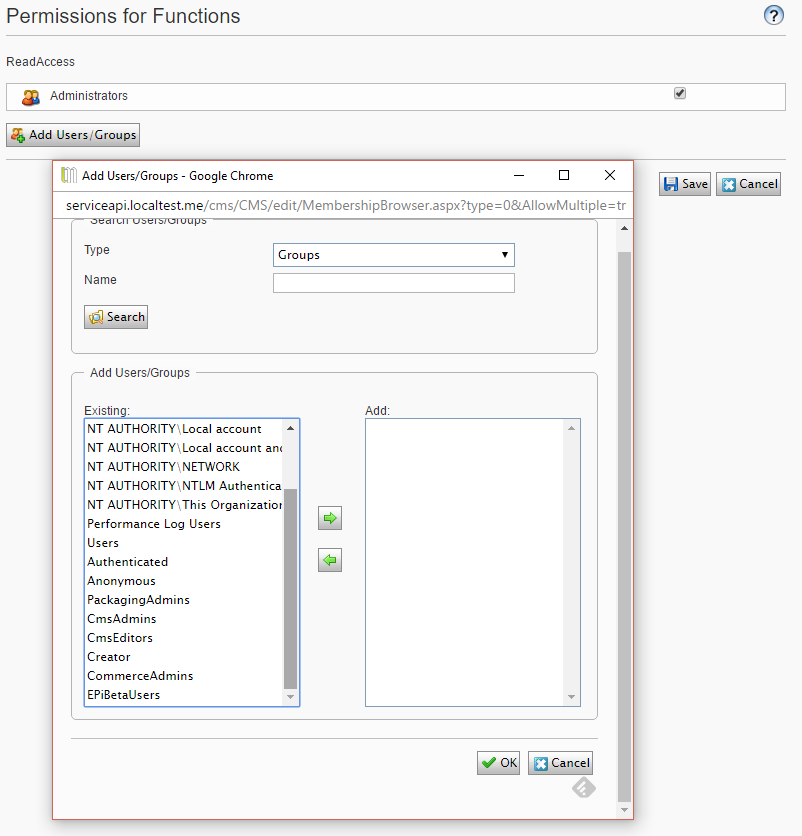
So if you are using ASP.NET Identity package and need a read-only access to Service API, you should upgrade to EPiServer 10.